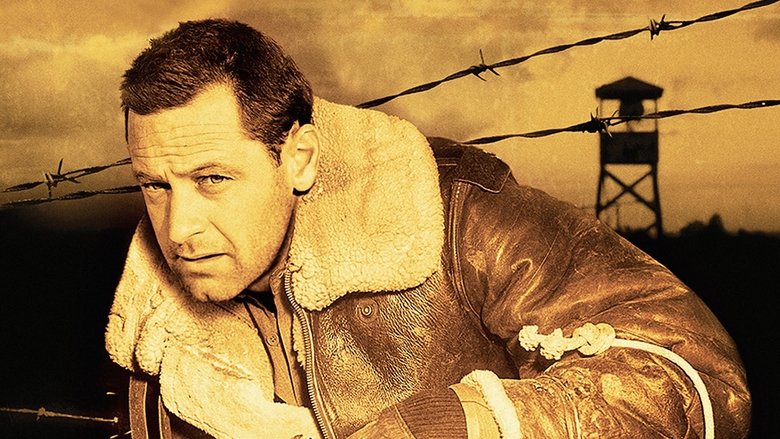“Stalag 17” is a classic, tense war drama. It follows the story of American prisoners of war held in a Nazi camp during World War II. Suspicion and distrust run rampant as the prisoners try to discover who among them is a spy for the Germans. The tension builds until it reaches its explosive climax, leaving the audience on edge until the very end.

CLICK HERE⤓⤓⤓☑️_Watch Stalag 17 1953 English Subtitles_
Review
In 1953, the movie “Stalag 17” hit theaters across America, and immediately became a critical and commercial success. Directed by Billy Wilder, the film is a captivating World War II drama that centers on a group of American prisoners of war (POWs) held captive in a German prison camp. The film’s storyline is rich with themes of loyalty, betrayal, survival, and humor. It is compelling from start to finish.
The plot follows the story of Sergeant J.J. Sefton (played by William Holden), who becomes the prime suspect when two American prisoners are killed while trying to escape. The other POWs in the camp believe that Sefton has been informing on them to the Germans in exchange for favors, but he denies any involvement. As tensions rise and suspicions deepen among the men, Sefton works tirelessly to prove his innocence and find out who the real traitor is.
The cast of “Stalag 17” is fantastic. William Holden delivers an outstanding performance as Sergeant Sefton; his portrayal of a cynical yet resourceful POW earned him an Academy Award for Best Actor. The supporting cast is also noteworthy, featuring actors such as Don Taylor, Otto Preminger, Peter Graves, Robert Strauss, Neville Brand, William Pierson, Harvey Lembeck.
One of the most memorable moments in “Stalag 17” is when Sefton declares: “If there’s one thing I’ve learned in this war – wherever you go – there you are.” This quote perfectly encapsulates the film’s message about resilience amidst adversity and how it can lead one to experience personal growth.
What makes “Stalag 17” even more remarkable is that it was based on actual events experienced by Edwin Gilbert Jacobson during World War II. Jacobson had been held captive in Stalag Luft III before being transferred to Stalag XVII-B; his experiences inspired the plot of the film.
“Stalag 17” was a commercial success, grossing over $5 million at the box office. It was also nominated for three Academy Awards, including Best Actor for William Holden and Best Director for Billy Wilder, winning one. The film’s popularity only grew in the years that followed, leading to numerous adaptations across multiple media platforms.
The cinematography and soundtracks used in the film are exceptional, capturing the atmosphere and feel of life in a POW camp during WWII. The scenes are masterfully shot and edited for maximum intensity and impact.
Overall, “Stalag 17” is an outstanding film that tells an engaging and compelling story about resilience in the face of adversity. Its message is timeless, and its enduring popularity is proof of its relevance today. If you haven’t seen it yet, I highly recommend giving it a watch- you will not be disappointed!
Technical Data

- Runtime : 120
- Release : 1953-05-29
- Genre : Comedy, Thriller, War
- Cast : William Holden as Sgt. J.J. Sefton, Don Taylor as Lt. James Dunbar, Otto Preminger as Oberst von Scherbach, Robert Strauss as Sgt. Stanislaus ‘Animal’ Kuzawa, Harvey Lembeck as Sgt. Harry Shapiro
- Crew : George Tomasini as Editor, Franz Waxman as Original Music Composer, Billy Wilder as Director, Billy Wilder as Producer, Billy Wilder as Writer
- Popularity 8.49
- Budget : $1,661,530
- Revenue : 0
- Company : Paramount
- Summary : It’s a dreary Christmas 1944 for the American POWs in Stalag 17 and the men in Barracks 4, all sergeants, have to deal with a grave problem—there seems to be a security leak.
- Tagline : The star-spangled, laugh-loaded salute to our P.W. heroes!
